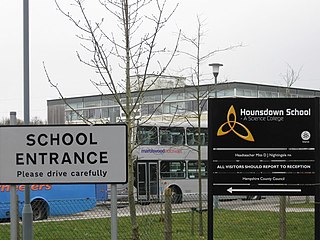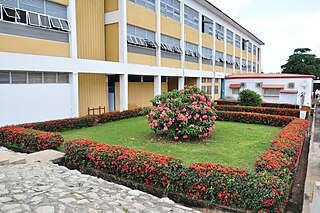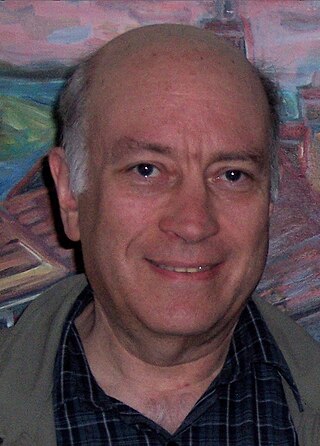Related Research Articles

Franz Mertens was a Polish mathematician. He was born in Schroda in the Grand Duchy of Posen, Kingdom of Prussia and died in Vienna, Austria.

The General Certificate of Secondary Education (GCSE) is an academic qualification in a range of subjects taken in England, Wales and Northern Ireland, having been introduced in September 1986 and its first exams taken in 1988. State schools in Scotland use the Scottish Qualifications Certificate instead. However private schools in Scotland often choose to follow the English GCSE system.

Education in the Netherlands is characterized by division: education is oriented toward the needs and background of the pupil. Education is divided over schools for different age groups, some of which are divided in streams for different educational levels. Schools are furthermore divided in public, special (religious), and general-special (neutral) schools, although there are also a few private schools. The Dutch grading scale runs from 1 to 10 (outstanding).
This is an index of education articles.
CESIL, or Computer Education in Schools Instruction Language, is a programming language designed to introduce pupils in British secondary schools to elementary computer programming. It is a simple language containing a total of fourteen instructions.

Rule 30 is an elementary cellular automaton introduced by Stephen Wolfram in 1983. Using Wolfram's classification scheme, Rule 30 is a Class III rule, displaying aperiodic, chaotic behaviour.

Bryan John Birch FRS is a British mathematician. His name has been given to the Birch and Swinnerton-Dyer conjecture.

Hounsdown School is a secondary school in Totton, near Southampton, Hampshire, England The school has 1,215 pupils, spanning ages 11 to 16. Classes are held in renovated 1960s buildings and new specialist blocks built since 2000.

Pei Hwa Secondary School (PHSS) is a co-educational government-aided secondary school in Fernvale Link, Singapore within walking distance of Fernvale and Layar LRT stations. Re-established in 2005, Pei Hwa Secondary School was first founded in 1934 as Pei Hwa Public School.

The International School Ibadan (ISI) is located on the Campus of the University of Ibadan, Nigeria's oldest university.

Geylang Methodist School (Secondary) (GMS(S)) is a co-educational government-aided Methodist secondary school located in Geylang, Singapore. Founded in 1924, the school offers secondary education leading to the Singapore-Cambridge GCE Ordinary Level or Singapore-Cambridge GCE Normal Level examinations. The incumbent principal is Mr Victor Owyong.

Brian Keith Harvey is a former Lecturer SOE of computer science at University of California, Berkeley. He and his students developed an educational programming language named UCBLogo which is free and open-source software, a dialect of the language Logo, as an interpreter, for learners.
Henry Martyn Cundy was a mathematics teacher and professor in Britain and Malawi as well as a singer, musician and poet. He was one of the founders of the School Mathematics Project to reform O level and A level teaching. Through this he had a big effect on maths teaching in Britain and especially in Africa.
David William Barron FBCS was a British academic in Physics and Computer Science who was described in the Times Higher Education magazine as one of the "founding fathers" of computer science.

Cynthia Solomon is an American computer scientist known for her work in popularizing computer science for students. She is a pioneer in the fields of computer science, and educational computing. While working as a researcher at Massachusetts Institute of Technology (MIT), Solomon took it upon herself to understand and program in the programming language Lisp. As she began learning this language, she realized the need for a programming language that was more accessible and understandable for children. Throughout her research studies in education, Solomon worked full-time as a computer teacher in elementary and secondary schools. Her work has mainly focused on research on human-computer interaction and children as designers. While working at Bolt, Beranek and Newman, she worked with Wally Feurzeig and Seymour Papert, to create the first programming language for children, named Logo. The language was created to teach concepts of programming related to Lisp. Solomon has attained many accomplishments in her life such as being the vice president of R&D for Logo Computer Systems, Inc., when Apple Logo was developed and was the Director of the Atari Cambridge Research Laboratory. Solomon worked on the program committee of Constructing Modern Knowledge and the Marvin Minsky Institute for Artificial Intelligence in 2016. Further, she has published many writings based on research in the field of child education and technology in the classroom. Solomon has conducted workshops in elementary schools, high schools, and colleges regarding academic research and writing. She continues to contribute to the field by speaking at conferences and working with the One Laptop per Child Foundation.
The Secondary School Mathematics Curriculum Improvement Study (SSMCIS) was the name of an American mathematics education program that stood for both the name of a curriculum and the name of the project that was responsible for developing curriculum materials. It is considered part of the second round of initiatives in the "New Math" movement of the 1960s. The program was led by Howard F. Fehr, a professor at Columbia University Teachers College.

A comprehensive school, or simply a comprehensive, typically describes a secondary school for pupils aged approximately 11–16 or 11–18, that does not select its intake on the basis of academic achievement or aptitude, in contrast to a selective school system where admission is restricted on the basis of selection criteria, usually academic performance. In England and Wales comprehensive schools were introduced as state schools on an experimental basis in the 1940s and became more widespread from 1965. They may be part of a local education authority or be a self governing academy or part of a multi-academy trust.
Mathematics education in the United Kingdom is largely carried out at ages 5–16 at primary school and secondary school. However voluntary Mathematics education in the UK takes place from 16 to 18, in sixth forms and other forms of further education. Whilst adults can study the subject at universities and higher education more widely. Mathematics education is not taught uniformly as exams and the syllabus vary across the countries of the United Kingdom, notably Scotland.
Sir Bryan Thwaites, FIMA, FRSA is an English applied mathematician, educationalist and administrator.
Douglas Arthur Quadling (1926–2015) was an English mathematician, school master and educationalist who was one of the four drivers behind the School Mathematics Project (SMP) in the 1960s and 70s.
References
- ↑ Walmsley, Angela Lynn Evans (2003). A History of the "new Mathematics" Movement and Its Relationship with Current Mathematical Reform. University Press of America. p. 60. ISBN 978-0-7618-2512-8.
- ↑ "Book reviews" (PDF). Cambridge Core. Cambridge University. Retrieved 4 January 2021.
- ↑ School Mathematics Project (SMP) Book 3 [Metric]. Cambridge University Press. 1970. p. 248.
- ↑ University of Southampton, Simpol.